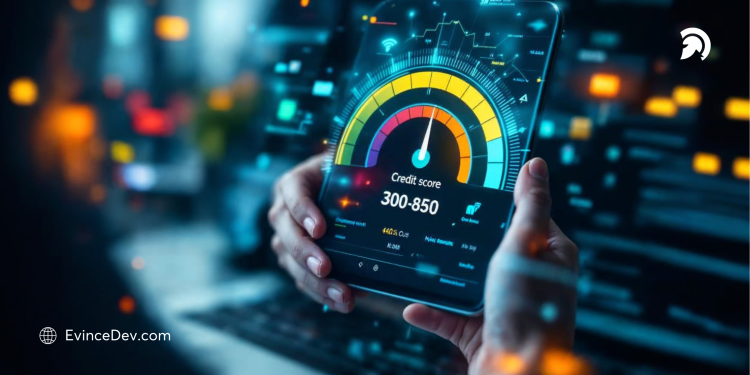The gig economy, powered by freelancers, creators, and part-time workers, has transformed how millions of people earn a living. Platforms like Uber, Upwork, and Fiverr have enabled flexible careers, but this freedom often comes with financial challenges.
One of the biggest hurdles gig workers face is access to credit. Traditional credit scoring systems were built for salaried employees with steady monthly incomes, leaving those with fluctuating earnings at a disadvantage when seeking loans, mortgages, or credit cards.
Fortunately, AI in credit scoring is reshaping the lending landscape. By analyzing real-time income, spending habits, and alternative data, AI offers a more inclusive and fair credit assessment model. This shift not only helps gig workers secure financial products but also enables lenders to tap into a vast, previously underserved market.
Read this blog to discover how AI is transforming credit scoring for the gig economy, exploring real-world examples and future trends that are making lending more inclusive, data-driven, and future-ready.
Limitations of Traditional Credit Scores in the Gig Economy
Traditional credit scores have long been based on one key factor: income stability, which presents a problem for workers in the gig economy. Freelancers, part-time workers, and creators, for instance, may not have consistent paychecks that fit the traditional molds used by scoring models.
Key Challenges:
- Unpredictable Income: Gig workers’ earnings vary month to month, often depending on the number of projects they secure. Traditional models frequently misinterpret this variability as financial instability.
- Limited Credit History: Freelancers or creators may not have traditional borrowing records (such as mortgages or long-term installment loans), leading to insufficient credit data.
- High-Risk Labeling: Due to irregular income patterns, lenders using outdated scoring models often classify gig workers as “high risk,” resulting in higher interest rates or denied credit.
These gaps highlight the need for credit assessment methods that evolve to reflect modern earning patterns.
The Rise of Variable Income Streams
Stable, long-term salaried jobs are no longer the defining characteristic of the modern workforce. Increasingly, people are blending freelance gigs, part-time roles, side hustles, and digital creator incomes from platforms like YouTube, TikTok, Upwork, or Fiverr. This shift has empowered millions to pursue flexible careers but has also created complex financial profiles that traditional lending systems struggle to evaluate.
The Complexity of Gig Income
- Fluctuating Earnings: Gig workers often see significant changes in income from month to month, depending on seasonal demand, project availability, or platform algorithms.
- Irregular Payment Sources: Unlike traditional employees who receive predictable paychecks, gig workers are often paid through multiple platforms, with inconsistent schedules and varying amounts.
These income dynamics don’t align with the assumptions of legacy credit scoring models, which are designed to assess borrowers with steady earnings. As a result, many financially responsible gig workers are unfairly penalized or denied access to credit.
Custom AI-powered credit scoring solutions are addressing this gap by analyzing income and spending patterns over time, rather than relying solely on static, outdated metrics. By doing so, they capture a more accurate picture of an individual’s financial stability and resilience, helping lenders make fairer decisions.
How AI Is Transforming Credit Scoring
Traditional credit scoring models, built decades ago for a stable, salaried workforce, rely on narrow metrics such as credit history length, repayment of fixed-term loans (e.g., mortgages or auto loans), and outstanding debt. Today’s diverse workforce, including freelancers, ride-share drivers, and creators, often has irregular incomes and limited credit histories, which can lead to unfair assessments of their financial stability. AI-driven credit scoring is transforming this landscape by analyzing vast, real-time datasets to create a holistic, behavior-based borrower profile. Many of these innovations are practical FinTech AI use cases, reshaping data-driven lending for the modern economy.
1. Income Consistency Analysis
A key challenge in evaluating gig workers is their variable cash flow. While traditional models view fluctuating monthly income as a risk, AI systems can identify long-term earning stability.
AI accomplishes this by:
- Aggregating income across multiple platforms and payment processors (e.g., Uber, Upwork, Etsy, Stripe, Payoneer).
- Detecting seasonal patterns (e.g., higher earnings during holiday seasons for drivers or delivery workers).
- Differentiating between temporary dips and signs of sustained income decline.
- Tracking how borrowers respond to low-income periods, whether they draw on savings, cut spending, or incur unsustainable debt.
This enables lenders to assess creditworthiness based on an individual’s financial resilience over time, rather than just a snapshot of their income from last month.
2. Spending Behavior Assessment
Earning money is only half the story; how it is managed and allocated is equally critical.
AI-powered tools can evaluate:
- Cash-flow stability: Regularity of inflows and outflows.
- Payment discipline: Consistency in paying rent, utilities, insurance, taxes, and subscriptions.
- Debt-to-income ratio: Measured dynamically instead of using outdated static ratios.
- Saving and emergency buffer habits: Identifying individuals who maintain prudent reserves.
- Spending anomalies: Detecting unusual spikes that may indicate financial distress or fraud.
By leveraging transaction-level data from open-banking APIs, e-wallets, and digital payment apps, AI generates a behavior-based risk profile that is far richer than what traditional bureau scores can offer.
3. Alternative Data Integration
Many gig workers and young earners fall into the “thin-file” category, those with little or no conventional credit history.
AI-based systems address this gap by integrating non-traditional yet highly predictive data, such as:
- Rental payment history: Demonstrates long-term reliability.
- Utility and telecom bills: Reflect consistent monthly obligations.
- Freelance/gig-platform income: Payments from services like Fiverr, DoorDash, or Patreon.
- BNPL (Buy-Now-Pay-Later) repayment history: Growing in importance as a consumer credit indicator.
- Recurring subscription payments: Show ongoing financial commitment and responsibility.
These alternative data streams provide lenders with a more comprehensive and equitable view of borrowers’ financial behavior, opening doors for millions who were previously underserved.
4. Real-Time Data Processing and Dynamic Scoring
Traditional credit reports often lag behind actual financial conditions by weeks or months.
AI solutions can:
- Ingest live data from banking systems, gig platforms, and payroll APIs.
- Update credit assessments instantly when income or expenses change.
- Enable real-time lending decisions, a vital feature for gig workers needing immediate access to micro-loans or working capital.
- Enhance risk management by promptly responding to emerging signs of distress (e.g., missed rent payments, significant income declines).
This dynamic approach ensures that lenders evaluate borrowers based on their current financial reality, rather than outdated records.
5. Machine-Learning Risk Modeling
AI utilizes machine-learning (ML) algorithms to identify subtle patterns that traditional statistical models may overlook.
Capabilities include:
- Analyzing large historical datasets to predict default risk with higher precision.
- Continuously learning from new borrower performance data, improving predictive accuracy over time.
- Segmenting borrowers into nuanced risk categories (e.g., identifying stable but irregular earners vs. genuinely high-risk applicants).
- Supporting personalized loan terms and pricing based on borrower profiles.
Such models enable lenders to expand their customer base while maintaining or even reducing default rates. This evolution is increasingly supported by AI development services that help financial institutions deploy robust, compliant, and scalable credit risk platforms.
6. Fraud Detection and Compliance
AI does not just assess creditworthiness; it also strengthens security and regulatory compliance:
- Detects synthetic identities and suspicious activity using anomaly-detection algorithms.
- Cross-checks income sources to validate the authenticity of gig-platform payments.
- Supports compliance with KYC (Know-Your-Customer), AML (Anti-Money-Laundering), and other financial regulations.
- Monitors for bias and model drift, enabling lenders to remain transparent and auditable in line with regulatory expectations.
By integrating these safeguards, lenders can extend credit to underserved groups without compromising on safety or compliance. Such capabilities highlight the importance of AI in risk management for the broader FinTech ecosystem.
7. Bias Reduction and Fairness
Traditional models often perpetuate systemic biases, for example, penalizing people without long credit histories or those in non-traditional jobs.
AI has the potential to:
- Shift focus from demographic proxies to objective behavioral and financial indicators.
- Evaluate borrowers based on current habits rather than historical privilege.
- Offer explainability tools that allow regulators and lenders to understand why a particular credit decision was made.
Important Note: AI is not automatically bias-free. Its fairness depends on responsible data selection, transparent modeling, and ongoing validation.
8. Market Growth and Future Adoption
Key drivers include:
- Expansion of the gig economy worldwide.
- Demand for instant, personalized lending decisions.
- Government and industry efforts to promote financial inclusion.
- Rising recognition of the limitations of traditional bureau-centric scoring.
Quick Stat:
According to industry forecasts, the global AI in credit scoring market is expected to grow at a CAGR of 25.9% between 2024 and 2031, underscoring strong momentum for AI-driven risk assessment.
This growth also reflects broader demand for AI FinTech solutions that enable institutions to innovate while maintaining compliance and security.
Real-Time Income Verification
Traditional credit bureaus often rely on outdated, static data, sometimes months old, which can lead to inaccurate assessments. In contrast, AI-powered systems use real-time data from banking apps, payment processors, and gig platforms, providing lenders with up-to-date snapshots of an applicant’s financial situation.
Benefits of Real-Time Data:
- Dynamic Credit Scores: Updated instantly to reflect current earnings.
- Accurate Financial Profiles: Provides a real-world view of applicants’ financial health.
- Faster Lending Decisions: Enables lenders to offer tailored credit products with greater confidence.
This innovation is particularly crucial for gig workers, whose income often fluctuates yet remains consistent over time when analyzed through the right lens.
Empowering Thin-File and Underserved Borrowers
Millions of gig workers fall into the “thin-file” category, people with limited or no traditional credit history. This often prevents them from accessing essential financial products.
AI-powered credit scoring addresses this by tapping into alternative data sources, giving these individuals a fair chance to prove their reliability.
Key Impact Areas:
- Alternative Data Usage: Includes rental payments, utilities, and freelance earnings.
- Behavioral Insights: Focuses on real-world spending and saving patterns rather than static records.
- Improved Financial Inclusion: Opens doors to loans, credit cards, and mortgages for gig workers and creators.
Quick stat:
According to Datos Insights’ report, 60% of lenders stated that they felt less confident relying only on traditional credit data when making lending decisions. In contrast, 86% reported greater confidence in using alternative credit data, a notable increase from the previous year.
By highlighting consistent payment behaviors and financial discipline, AI enables lenders to make informed decisions and broaden access to credit.
Real-World Examples of AI in Credit Scoring
Several FinTech leaders are leveraging AI to create fairer, more accessible credit solutions for gig workers:
- ACE Cash Express: Uses real-time transaction data to assess financial stability, focusing on cash flow and spending habits rather than outdated reports.
- SpeedyCash: Integrates AI-based scoring models that consider rent, utilities, and subscription payments to support borrowers with limited credit history.
- LendUp: Expands access for underserved borrowers by analyzing income stability, payday loan history, and educational background.
- Upstart: Incorporates education, employment, and income growth potential into scoring models, adapting in real time to economic changes.
These companies demonstrate how AI is redefining credit access for modern workers with diverse income sources. The development of such solutions often involves collaboration with experienced FinTech app development providers to ensure secure and compliant deployment.
Future Trends in AI Credit Scoring
As the gig economy continues to expand, the role of AI in credit scoring will only grow stronger. What’s Next:
- Hyper-Personalized Credit Solutions: AI models will offer tailored financial products based on unique borrower profiles.
- Broader Data Integration: Social media signals and purchase histories may be used to enrich credit assessments.
- Enhanced Compliance and Security: AI will help lenders meet regulatory standards while ensuring data privacy and fraud prevention.
These trends also intersect with other areas such as AI in wealth management, where intelligent tools analyze customer behavior to deliver personalized investment strategies, further expanding the impact of AI across FinTech services.
Conclusion
The shift toward AI-driven credit scoring is more than a technological advancement; it’s a paradigm shift in financial inclusion. For too long, responsible gig workers with irregular incomes were excluded from mainstream lending opportunities. Today, AI enables them to demonstrate their true financial health, while giving lenders the tools to tap into previously underserved markets with confidence. The future of credit scoring is dynamic, data-driven, and fair, aligning with the realities of a modern, flexible workforce and ensuring that financial opportunities are accessible to all.
To explore how credit scoring fits into the larger transformation of financial services and how AI is reshaping lending, risk management, fraud detection, and wealth management, read our comprehensive guide on AI in Action: Real-World FinTech AI Use Cases Revolutionizing the Future (Part II) for deeper insights.




